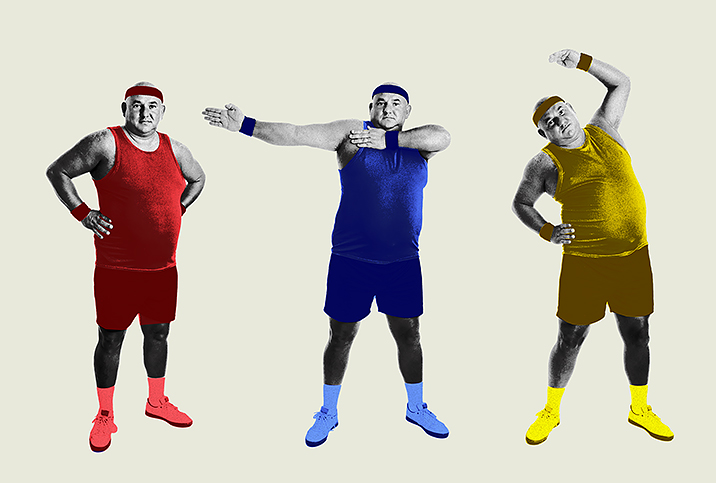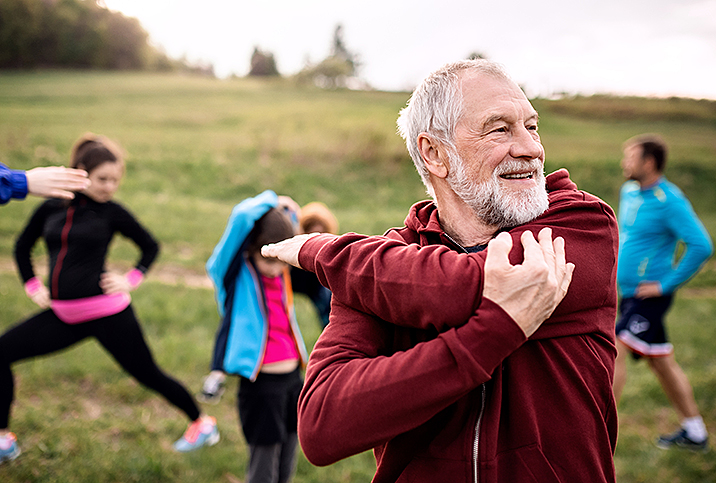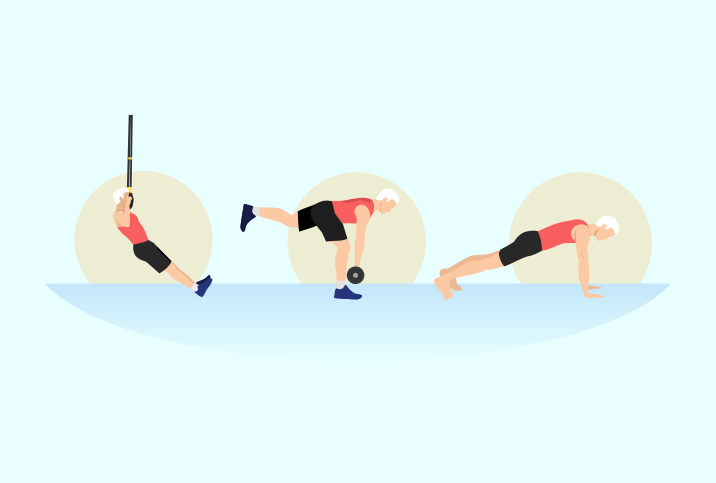Engage in 4 of the Best Exercises to Improve Erectile Dysfunction

Regular exercise is important for your physical and mental well-being. Did you know, though, it may also improve your performance in the bedroom? And not just your stamina.
Four of the primary exercise types—endurance, strength, flexibility and balance training—all play a vital role in your sexual health and are among the best exercises to improve erectile dysfunction (ED).
"Male erection consists of a combination of neurological, hormonal, vascular and psychological factors, which all work towards opening up the arteries in the penis, which allow blood in whilst muscles clamp down on the veins stopping blood from leaving again," said Gareth Nye, Ph.D., a lecturer of physiology at Chester Medical School in England.
"Dysfunction ultimately rests on a lack of chemicals being released, mainly the chemical in charge of opening up the blood vessels, nitric oxide," he added, saying exercise can help with the process.
Harvard's Health Professionals Follow-up Study is an ongoing project that relies on men filling out a biannual questionnaire about their health. Its purpose is to "evaluate a series of hypotheses about men's health relating nutritional factors to the incidence of serious illnesses, such as cancer, heart disease and other vascular diseases." Risk factors for ED are among the components of the study.
Starting in 1986, the study examined 22,086 men ages 40 to 75 in the United States. The participants included in the 2000 survey all reported good erectile function and no major chronic disease before 1986. During the 14-year follow-up period, 17.7 percent experienced ED. The study indicated obesity and smoking are associated with an increased risk of ED, while physical activity lowered those risks.
According to an analysis, men who did three hours of intense outdoor work or ran for 1.5 hours per week were 20 percent less likely to develop ED than the sedentary participants. Those who ran for 2.5 hours per week reaped even greater benefits, with a 30 percent lower risk. However, regardless of exercise level, obese or overweight men showed a greater risk of developing ED.
Thus, medical advice suggests exercise helps your sex life.
1. Aerobic or endurance training
Aerobic or cardio training is the best exercise for ED. Its primary goal, after all, is to increase the heart rate, according to Denise Asafu-Adjei, M.D., an assistant professor of urology and the medical director of male reproductive medicine at Loyola University Chicago Stritch School of Medicine.
"Aerobic exercise increases your heart rate and works your blood vessels, which keeps the blood vessels healthy and ultimately maximizes blood flow to the penis," she said.
Walking, running, swimming and cycling are examples of the many physical activities that can be classified as aerobic exercises.
Nye added ED can be a sign of underlying cardiovascular issues, such as atherosclerosis and high blood pressure.
"Regularly undertaking aerobic exercise is the most effective non-pharmaceutical method of lowering blood pressure," he said. "Exercise is also a big releaser of endorphins, which can alter your brain chemistry if there are potential psychological problems behind ED."
One systematic review, published in 2018 and compiled from studies between 2006 and 2016, found 40 minutes of moderate to vigorous aerobic exercise four times per week contributes to improved erectile function in men with ED caused by physical inactivity, obesity, cardiovascular diseases, metabolic syndrome or hypertension.
2. Strength training
By building muscle and bone, strength training can help improve the body's ratio of lean muscle mass to fat.
Resistance training (including weightlifting) has also shown to be beneficial for cardiovascular health, which is linked to erectile function as well, as found in the 2018 review. Combined with aerobic exercise, strength training led to a 15 percent improvement in participants' sexual function.
Kegel exercises, the training of the pelvic floor muscles, are not only for women. They can help diminish the symptoms of ED within a few months or prevent development of the condition in the first place, Nye said.
"Targeting specific muscle groups can aid in ED, particularly focusing on the pelvic floor muscles and the muscles located around the base of the penis responsible for blocking the blood from exiting the penis during an attempted erection," he explained.
3. Balance training
To help prevent potential falls and injuries, balance exercises activate your core muscles, lower back and legs. They are also a useful practice for keeping your neurological system working and in tune, according to Nye.
"By maintaining good hand-eye coordination and a good balance, you are improving the ability for your nerves to make connections and send/receive information to and from the brain," he said.
This advice is based on the theory that you're enhancing the pathway from the genital area to the brain and back to help in the production of an erection.
4. Flexibility or mobility training
Flexibility training helps prevent injuries as it keeps muscles stretched and joints flexible.
Yoga or Pilates exercises, for example, improve flexibility and balance, as well as mental clarity by allowing you to stay in the moment. As a result, these exercises might remove stressors potentially keeping you from performing in every area of life.
While exercise has many benefits, it's important to note that overtraining has potential drawbacks, one of which is a lower resting testosterone, which can diminish libido. And if you don't feel like having sex, what good is a strong erection? There's a balance to be struck, but some exercise is infinitely better than no exercise.


















